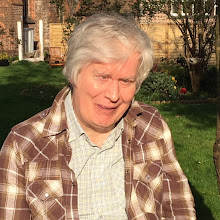: The High-Intensity Secret to Ageless Skin
 |
| Looking good |
For centuries, face creams have been humanity’s front-line defence against ageing. From olive oil-based cold creams in Ancient Greece to the global beauty empires of NIVEA and Pond’s, our pursuit of youthful skin has never waned. But in 2025, a promising biomedical breakthrough suggests the future of skincare may lie far beyond the jar.
The Evolution of Face Cream
Face creams date back over 2,700 years to early Chinese and Egyptian rituals. Galen’s cold cream—made of water, beeswax, olive oil, and floral extracts—was a foundational formula that endured for centuries. Today, face creams represent a $56.8 billion global market projected to reach $73.9 billion by 2030.
But modern consumers are asking a provocative question: can we do better than creams?
The Rise of HIUS Therapy
A new frontier in skin and organ rejuvenation is emerging from the halls of medical academia: High-Intensity Ultrasound Therapy (HIUS). Initially designed for prostate cancer treatment in trials at the Morphic Cancer Centre in 2002, HIUS showed potential far beyond its original scope.
✨ How It Works:
HIUS applies 8W ultrasound (1 or 3 MHz) externally.
Targeted cells—whether cancerous or biologically “cessated”—are stimulated to undergo molecular nuclear fusion, a process theorized to break down dense, inactive tissue.
The immune system responds by clearing ruptured cells, potentially smoothing wrinkles and revitalizing aging organs.
Formula: H₂O + P + HIUS → He + O + Energy + X-ray
Beyond Cosmetics
Researchers discovered that biologically inactive cells contribute not only to wrinkles but to organ sluggishness and even cancer proliferation. By rupturing these cells externally, HIUS may clear “cessated” skin layers and stimulate deeper rejuvenation.
The method reportedly reduces skin blemishes, tightens joints, and—amazingly—regrows hair without transplants or oils. One proponent proudly notes being 61 and wrinkle-free, often mistaken for being in his 40s.
A New Era of Regeneration?
While genetic heritage plays its part (thank you, Grandma), HIUS appears to offer a genuine edge against time’s effects—less about vanity, more about vitality.
Could this ultrasound breakthrough replace face creams entirely?
That future may already be humming beneath our skin.
Would you like a more academic tone or even a visual to pair with this?
Commentary: Rethinking the Anti-Aging Narrative
The fascination with youth is nothing new—but what if the narrative shifted from merely preserving appearance to restoring biological integrity? HIUS therapy challenges not just skincare conventions but the cultural fixation on superficial remedies. This isn’t Botox 2.0. It’s a potential rewrite of aging itself.
Where face creams soothe the surface, HIUS interrogates the architecture beneath. If further validated, this method could dismantle the binary between aesthetic and medical intervention. Wrinkles, sluggish organs, even dormant hair follicles—these may not be signs of irreversible decay, but of treatable dormancy.
Is this progress, or hubris? Perhaps both. But in a world where tech infiltrates every pore of human existence, why should skin be any different?
HIUS invites us to ask: what does it mean to age well—and could vitality become less about how we look, and more about how deeply we regenerate?

No comments:
Post a Comment